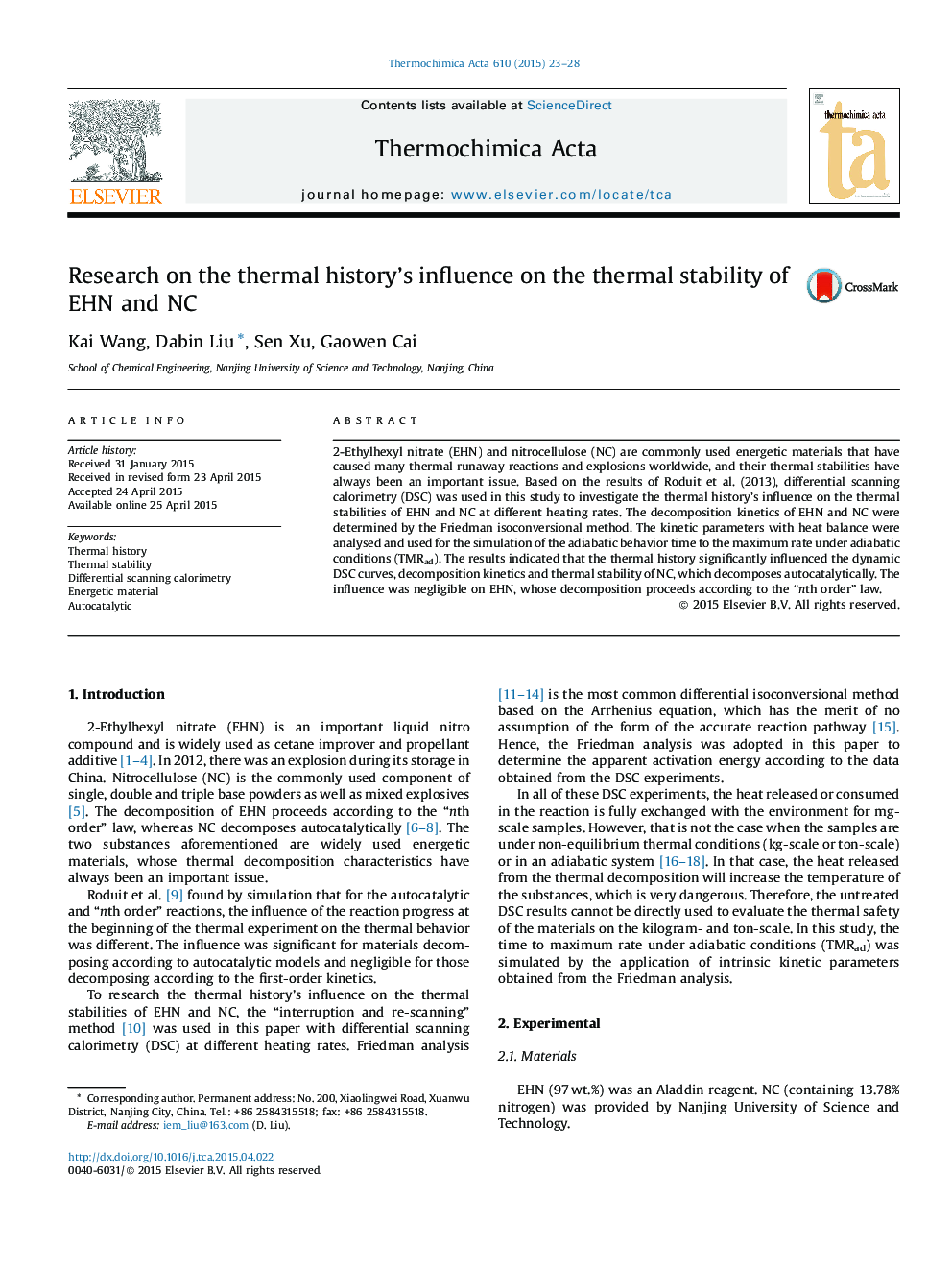| Article ID | Journal | Published Year | Pages | File Type |
|---|---|---|---|---|
| 672923 | Thermochimica Acta | 2015 | 6 Pages |
•The thermal history’s influence was studied using dynamic DSC measurements.•The “interruption and re-scanning” method was used in this study.•The kinetics of EHN and NC were determined by Friedman method.•The kinetic parameters were analyzed and used for simulation of TMRad.•The influence of thermal history on the thermal stability was researched.
2-Ethylhexyl nitrate (EHN) and nitrocellulose (NC) are commonly used energetic materials that have caused many thermal runaway reactions and explosions worldwide, and their thermal stabilities have always been an important issue. Based on the results of Roduit et al. (2013), differential scanning calorimetry (DSC) was used in this study to investigate the thermal history’s influence on the thermal stabilities of EHN and NC at different heating rates. The decomposition kinetics of EHN and NC were determined by the Friedman isoconversional method. The kinetic parameters with heat balance were analysed and used for the simulation of the adiabatic behavior time to the maximum rate under adiabatic conditions (TMRad). The results indicated that the thermal history significantly influenced the dynamic DSC curves, decomposition kinetics and thermal stability of NC, which decomposes autocatalytically. The influence was negligible on EHN, whose decomposition proceeds according to the “nth order” law.
